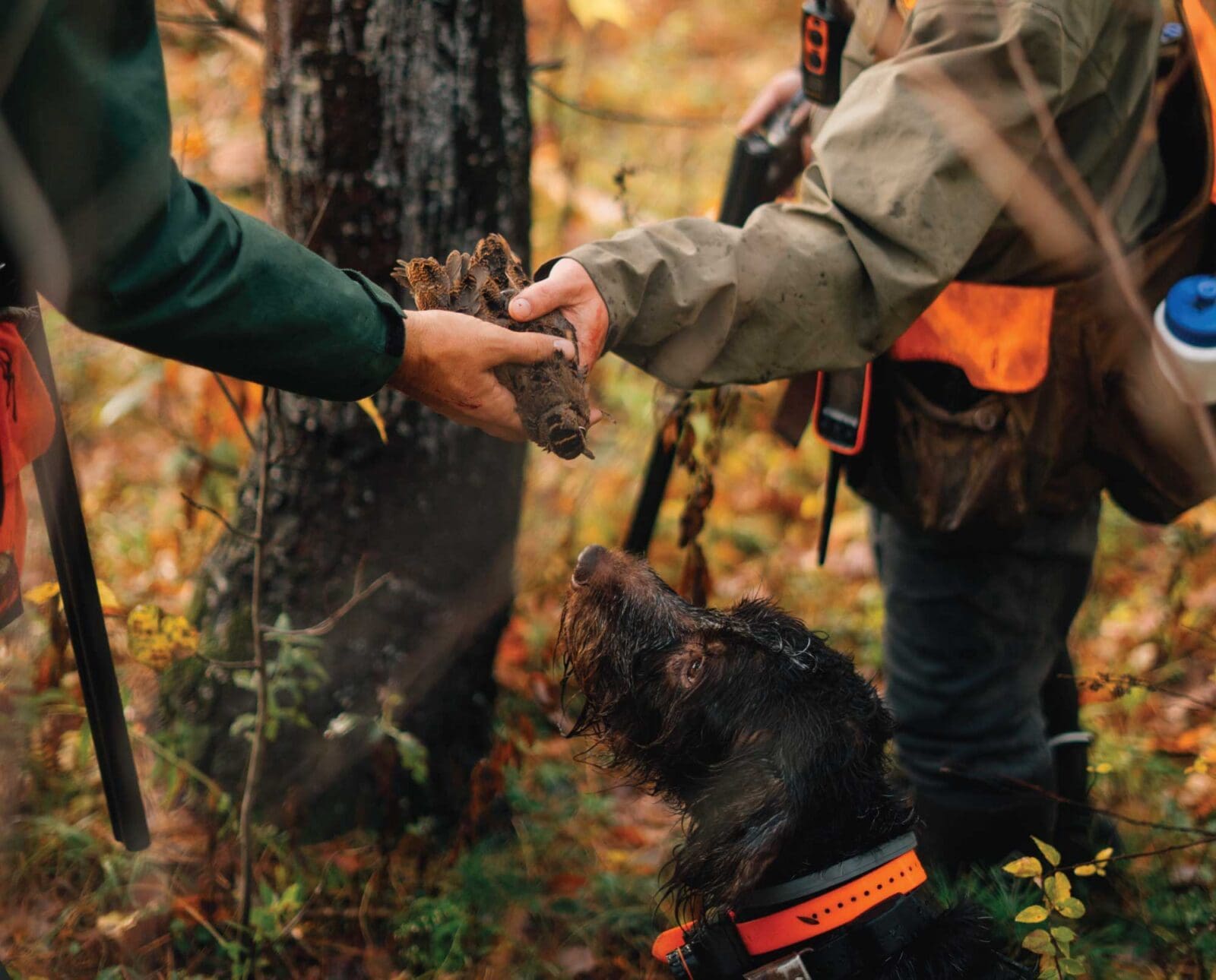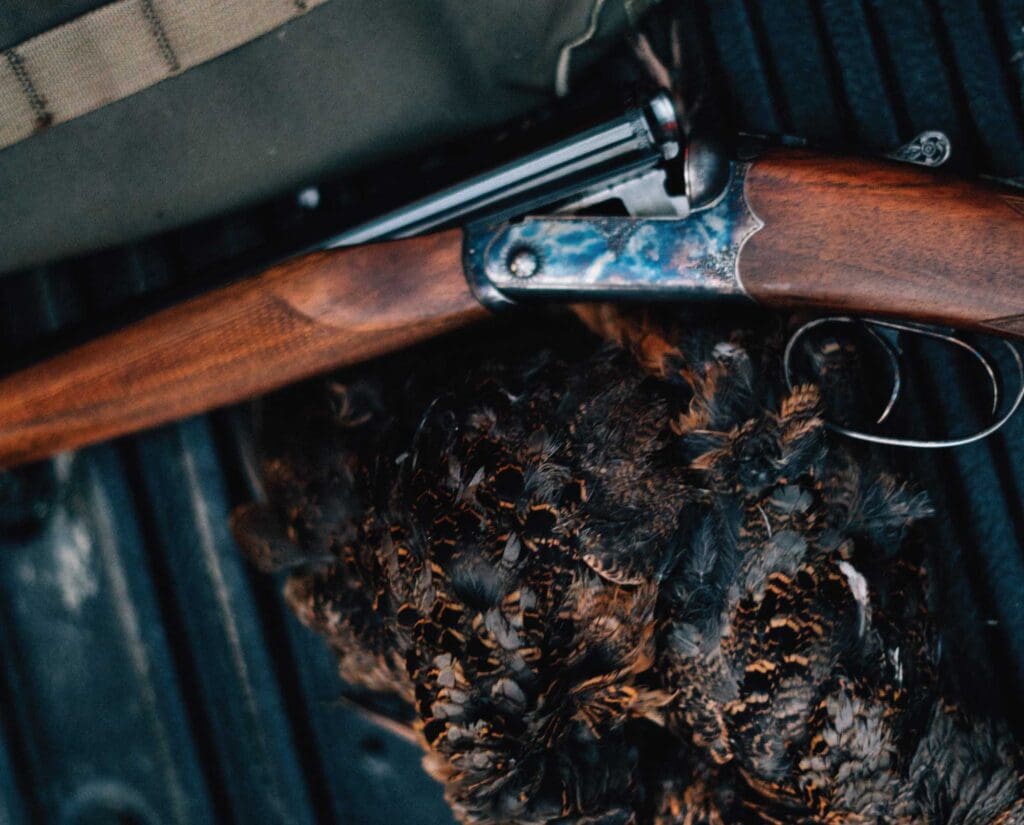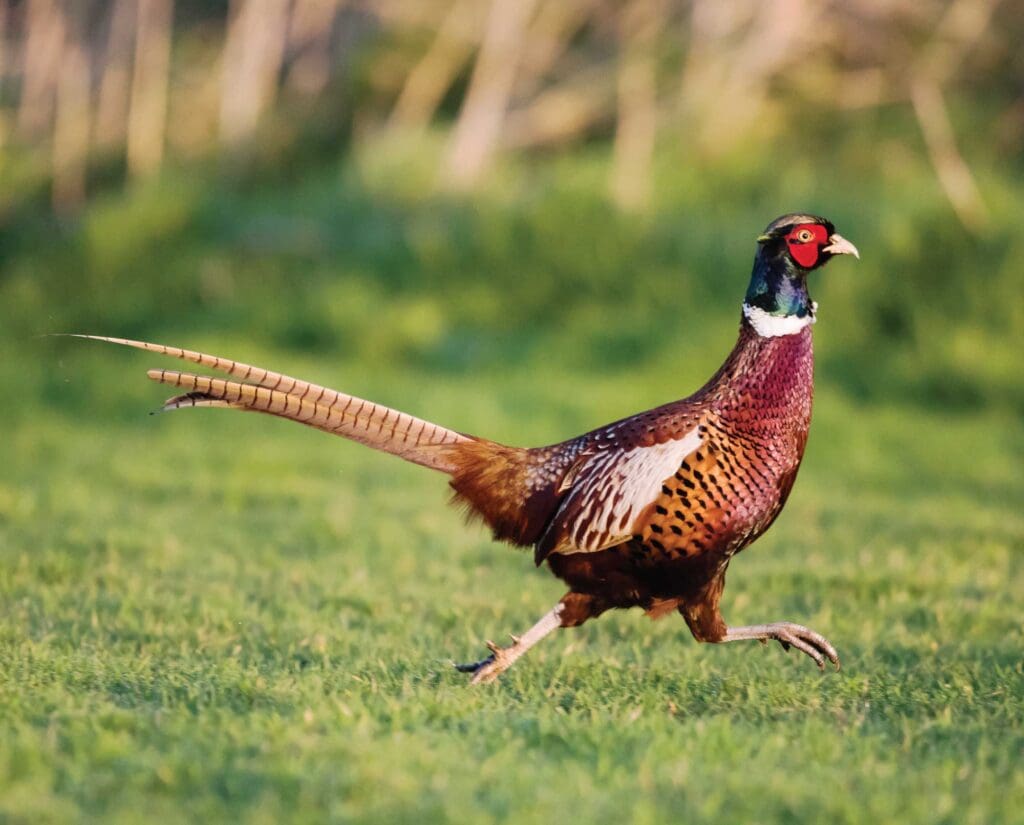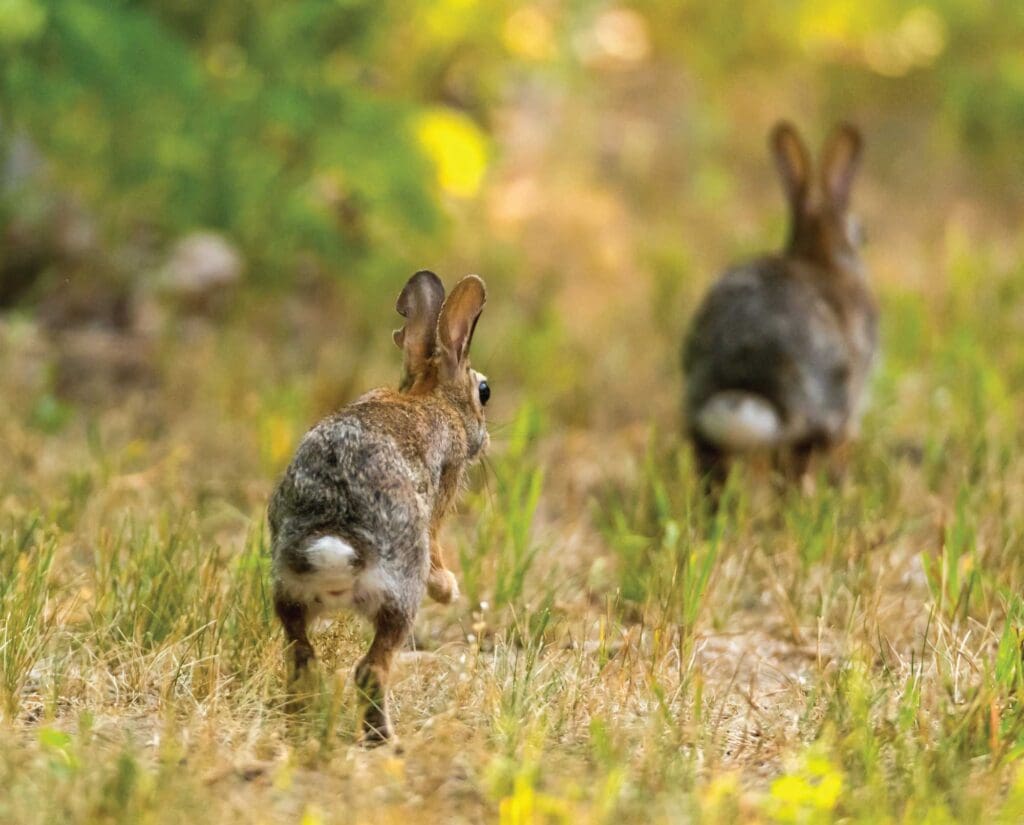Home » Hunting Rules, Licenses, and Seasons » Bird Hunting in Massachusetts
Bird Hunting in Massachusetts

A.J. DeRosa, founder of Project Upland, is a New England…
Massachusetts has a storied history in Ruffed Grouse and woodcock hunting. Today, upland hunting persists from pheasant to snipe.
The Brittany tore straight through the thick thorn tangle as light rain soaked through my heavy clothes. A few moments passed. One woodcock contact turned to two, then three. Massachusetts exceeded my expectations.
Western Massachusetts, specifically the Berkshires, is a fabled place for New Englanders. My grandfather started hunting there in the 50s and my father cut his teeth there. I shot my first deer in the Berkshires. I’ve shot more grouse there than I can count. Decades later, I hunted woodcock there as well.
In the way of bird hunting, Massachusetts is not exactly like it used to be. Today, it’s a far cry from Andover native William Harden Foster’s 1942 classic, New England Grouse Shooting. The days of shooting Ruffed Grouse in the Merrimack Valley have faded into memories.
The state’s wild pheasant hunting has taken the same turn. In the late eighties and early nineties, you could still see wild roosters walking dusty roads and a flushing wild grouse was not uncommon. But by the late nineties, I saw my last Ruffed Grouse. It was sitting on a lone overgrown apple tree, seemingly in the middle of nowhere.
One thing that hasn’t changed, however, is no hunting on Sundays.
| Species* | Season | Daily / Possession Limit | Notes |
| Ruffed Grouse | Oct. 14 – Nov. 25, 2023 | 3/6 | (15 Annual Limit) |
| American Woodcock | Oct 01 – Nov 21, 2022 | 3/9 | |
| Pheasant (Stocked) | Oct. 14 – Nov. 30, 2023 | 2/4 | |
| Pheasant Youth (Stocked) | Sept 2, 9, 16, 23 and Oct 7, 2022 | 2/4 | |
| Bobwhite Quail (Stocked) | Oct 15 – Nov 26, 2022 | 4/8 | Zones 11-14 Only |
| Snipe | Sept 01 – Dec 16, 2022 | 8/24 | |
| Crow | Jan. 2 – Apr. 10, 2023 & Jul. 1 – Apr. 10, 2024 | No Limit | Aloud only on Mondays, Fridays, and Saturdays |
| Cottontail Rabbit | Oct. 14, 2023 – Feb. 29, 2024 | 5/10 | Zones 1-14 |
| Snowshoe Hare | Oct. 14, 2023 – Feb 29, 2024 | 2/4 | Zones 1-14 |
| Gray Squirrel | Sept. 5, 2023 – Feb 29, 2024 | 5/10 | Zone 1-14 |
Ruffed Grouse Hunting in Massachusetts
When it comes to wild birds in Massachusetts, you can still find Ruffed Grouse hunting opportunities in string pockets in the Western and central part of the state. However, I would question one’s ethics if they’re willing to fill the state’s three bird limit.
Grouse season is still open in the 13 zones that make up the Bay State. However, their season is quite a bit shorter than neighboring states’. Massachusetts’s grouse season starts late on October 14 and ends early on November 25, 2023. If getting a fabled Massachusetts Ruffed Grouse is on your bucket list, stick to the mountains in the western part of the state. Abandoned apple orchards and some active timber cutting are some of the last nostalgic covers for this iconic game bird in Massachusetts.

American Woodcock Hunting in Massachusetts
American Woodcock hunting is undoubtedly the gem of this state. From spring woodcock training, great migration flights, and even resident birds, Massachusetts can be a great state for hunting these unique upland game birds. The New England Cottontail recovery efforts in Massachusetts have created some incredible stopover covers as well as spring mating grounds for the bird. Pheasant stocking sites and other state properties are often on former overgrown farmland, making prime soil conditions for woodcock.
Like in all states, the American Woodcock is federally regulated with a three bird limit. The season opens October 1st and ends November 21st, 2023. Depending on weather conditions, the later part of November can be tough to find birds. Traditionally, the prime week for woodcock hunting is the first week of November.

Ring-necked Pheasant Hunting in Massachusetts
In the early 1900s, pheasant releases in Massachusetts were so successful that the state opened its official season in 1914. The birds thrived under the heavily farmed conditions. William Harden Foster credits the pheasant for the boom in popularity of upland hunting in New England, although he expressed a clear grudge to the bird and its followers:
“The upshot of all this was that a town that might have been issuing less than twenty hunting licenses to all classes of hunters, before the pheasant seasons opened, suddenly found itself selling ten times that many. Naturally, it did not take this neophyte army long to practically clean out the supply of semi-tame, conspicuous pheasants. Then the sale of licenses subsided, but never again to the pre-pheasant level. In the meantime practically every farmer and rural land-owner in the pheasant areas had been forced to post their land for the sake of self-protection. Lawless pheasant hunters had cut wire fences, knocked over stone walls, left stock gates open, and shot into buildings. They had even set fires to meadows and small covers where birds had been driven. Small wonder that no trespassing posters became the sign of the times, or that the upland gunner, as a class, came into disrepute, for the first time in the history of New England.”
Today, there is no such thing as a wild pheasant hunting in Massachusetts. But the state boasts that it stocks 40,000 birds annually in its Massachusetts pheasant stocking sites. The daily bag limit is two birds and the season coincides with Ruffed Grouse from October 14th to November 30th, 2023. Massachusetts has five additional youth seasons starting in September and ending just before the regular season. The shooting of female pheasants is legal in Massachusetts.
Northern Bobwhite Quail Hunting in Massachusetts
When reading upland stories from the 1970s, they’re ridden with New England bird hunters missing the old days of hunting wild northern bobwhite quail. Much debate has ensued over the bird’s decline from its native range. Scientists mostly point towards deep snow combined with a lack of habitat as the final act in the wild bobwhite quail story of Massachusetts. There are no wild bobwhite in Massachusetts today.
The quail found and hunted in Massachusetts today are a combination of birds released for dog training and 4,000 birds the Massachusetts Division of Fisheries and Wildlife stock each year. The only two sites the state stocks with bobwhite quail are Myles Standish State Forest in Plymouth and the Francis Crane WMA in Falmouth. Quail hunting opens October 15th to November 26th, is limited only to zones 11-14, and has a daily bag limit of four birds.
Snipe Hunting in Massachusetts
This overlooked migratory game bird that puts on a great opportunity for both dog work and wingshooting is abundant in Massachusetts. Snipe hunting in the late 1800s into the turn of the century was one of the most widely used forms of bird hunting in America. Today, it’s tough to meet anyone who targets these quick flying birds that inspired the term “sniper.”
Like all native game birds, there have been some decline in habitat in association with snipe. However, other areas of the state are experiencing an increase. Found in boreal wetlands, there are areas in the western mountains that have high elevation bogs that have also hosted strongholds of snipe.
One of the prime appeals of the snipe is a chance for early season New England bird hunting. Opening on September 1st, the season runs to December 16th, 2023 with a daily bag limit of eight birds.

Rabbit and Hare Hunting in Massachusetts
Massachusetts is a hunting melting pot. One way to enjoy that diversity is rabbit and hare hunting. The state boasts both a cottontail rabbit and snowshoe hare population. I spent many of my childhood days hunting over hounds in the southeastern part of the state with Italian and Portuguese immigrants, a popular pursuit in these southern European cultures. My grandfather would make traditional cacciatore with the meat. My brother and I would fight over who got to skin the rabbits using ziti as a straw to blow into and inflate the hide of rabbits for easy removal.
Many do not realize the eastern cottontail is not native to Massachusetts. The species dominates over the native New England cottontail and was introduced in the late 19th century. The New England cottontail was almost listed as an endangered species and was officially removed from consideration in 2015 as the population showed signs of slow increase. Many species have benefited from the efforts in restoring the rabbit’s native habitats.
Depending on what zone you hunt in, rabbit and hare season opens on October 14th, 2023 runs as late as February 28th, 2024. The daily bag limit on hare is two, and the daily bag limit of cottontail is five.
Bird Hunting License, Permits, and Hunter Orange in Massachusetts
| License | Resident | Non-resident |
| Hunting | $29.50 | $101.50 (Big Game) |
| Small Game Hunting | N/A | $67.50 |
| Youth Hunting (age 15-17) | $6.50 | N/A |
| Senor Hunting (age 65-69) | $14.75 | N/A |
| Senior Sporting (age 70+) | FREE | N/A |
| Pheasant/Quail Permit | $8 | $12 |
| Wildlands Stamp (required) | $5 | $5 |
A hunting license is needed by anyone aged 15 or older in the state of Massachusetts. Basic hunter education is required to purchase a license unless proof of license ownership prior to 2007 is presented. Hunters can use a legible image of their hunting license on a mobile device as proof of license as long as all physical tagging is adhered to (big game).
READ: How to Get a Hunting License
The pheasant/quail permit is new to the state licensing for upland game hunters. Additionally, non-residents are required to always have a wildlands stamp and residents must purchase one with only their first license. MassWildlife has indicated a steady increase in license prices over the next five years.
The use of a blaze orange cap is required by law when hunting on pheasant and quail stocked wildlife management areas in Massachusetts. During the youth deer season and deer shotgun season, 500 square inches of blaze orange is required for all hunters (except waterfowl) on the chest, back, and head. Waterfowl hunters must wear the blaze orange requirements to and from their blind or boat. Project Upland encourages hunters to always wear blaze orange when bird hunting despite local regulations.
Bird Dogs and Massachusetts Hunting Laws
The use of dogs for hunting (other than waterfowl) is prohibited during the general deer season. Dog training can occur anytime of year as long as only blank cartridges are possessed for handguns. Although there is no legally mandated quite period in Massachusetts, ethics and conservation considerations should keep dogs away from wild birds during the nesting and brooding seasons. Any off-leash training on a wildlife management area requires the handler to have a current hunting license. A noticeable undertone to this law is that it has encouraged non-hunting dog walkers to buy hunting licenses.
The use of pen raised birds to train in Massachusetts requires a permit. A class 8 permit application must be filled out and mailed into the state. Birds must be acquired in state, which a list of locations can be provided by MassWildlife. All out of state birds require an importation permit.
A.J. DeRosa, founder of Project Upland, is a New England native with over 35 years of hunting experience across three continents. His passion for upland birds and side-by-side shotguns has taken him around the world, uncovering the stories of people and places connected to the uplands. First published in 2004, he wrote The Urban Deer Complex in 2014 and soon discovered a love for filmmaking, which led to the award-winning Project Upland film series. A.J.'s dedication to wildlife drives his advocacy for conservation policy and habitat funding at both federal and state levels. He serves as Vice Chair of the New Hampshire Fish & Game Commission, giving back to his community. You can often find A.J. and his Wirehaired Pointing Griffon, Grim, hunting in the mountains of New England—or wherever the birds lead them.



